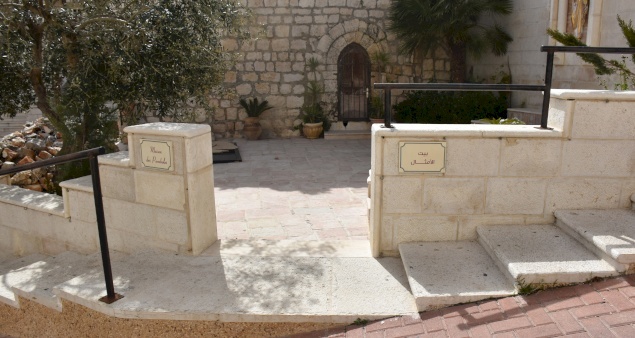TAYBEH – In this small Christian village in northern Palestine, next to the Latin Church of Christ the Redeemer, is a popular place of pilgrimage for visitors: the Parables House, designed to remind everyone of certain parables taught by Jesus.
Taybeh is not only about its Byzantine church of St. George, or its famous brewery, renowned for its delicious beers and its annual Oktoberfest.
Welcoming many pilgrims every year, this village, of about 900 inhabitants, located a few kilometers away from Ramallah, also offers an unusual visit; one that consists in rediscovering the parables of Christ through a small stone house, set up right in front of the church.
The French Sisters of the Holy Cross of Jerusalem (Soeurs de la Sainte-Croix de Jérusalem), who have been there for more than 20 years, are in charge of this famous “Parables House” – in addition to teaching French in the Latin school, organizing extra-curricular activities and youth camps centered on the French language, and welcoming pilgrims. There are currently three of them: Sister Marie-Martine, Sister Claudine and Sister Nelly. Their religious congregation, created in 1944 and whose charism is the education and formation of youth, was founded by the Venerable Fr. Jacques Sevin (1882-1951), a Jesuit who, taking up the educational intuition and pedagogy of Baden Powell, also founded Catholic scouting.
“Today, Sister Nelly teaches French in the school of the Latin Patriarchate, which brings together the Christians of Taybeh as well as the Muslims of the surrounding villages,” says Sister Claudine, looking around the churchyard, where a stone “Calvary” topped by three crosses has been erected on the initiative of the parish priest, Fr. Bashar.
For several years, the village of Taybeh has been experiencing significant emigration; the inhabitants often leave for the United Arab Emirates or the United States. “Those who remain work in Ramallah for the most part, or in Jerusalem, or in small businesses in the village. Many are supported financially by family members who have emigrated,” explains Sister Claudine.
It was Fr. Johnny Sansour, the former parish priest of Taybeh, who set up the idea of a “Parables House”. In 1974, after the death of its owner, he bought a traditional Palestinian house dating back some 300 years and converted it into a place for visitors to rediscover the Bible.
Thus, as soon as you enter, this Parables House takes you back to the Holy Scriptures. The hole in the door frame reminds us of the Song of Songs, chapter 5 verses 4-5; a small lamp on a bushel reminds us of the Gospel of Jesus Christ according to Saint Matthew, chapter 5 verses 14 and 15; a millstone reminds us of the parable of the Leaven (Saint Matthew, chapter 13, verse 33), but also Mark 9:42, about the little ones.
“You see these traditional women’s tunics hanging on the grain silo of the house?” asks Sister Claudine, the official guide of the place. “And those wineskins, all dried up? They refer to the parable of the new clothes and the new wine, found in the Gospels of Saint Matthew and Saint Luke.”
Under the main room, a small stable has also been set up to help visitors understand the Nativity. “How can we imagine that a people with such a strong welcoming culture could have refused hospitality to Mary, a pregnant woman?” asks Sister Claudine. “It seems far more likely that the people sought the best place to put her; not in a crowded inn room, but warm on the straw, surrounded by animals heating the room,” she adds, echoing the explanations given in Bethlehem during visits to the crypt of the Church of the Nativity.
Outside, around the small amphitheater-shaped courtyard designed by Fr. Aziz, parish priest of Taybeh from 2012 to 2015, marble plaques indicate the location of the Parables House. One leaves the place not without emotion; the impression of having lived for a fleeting moment in the time of Christ does not leave one indifferent. Not without a smile, Sister Claudine closes the door. The next visit will surely be for the pilgrims, who will thus be able to discover, from a new point of view, the parables of Christ.
By: Cécile Leca/ lpj.org






